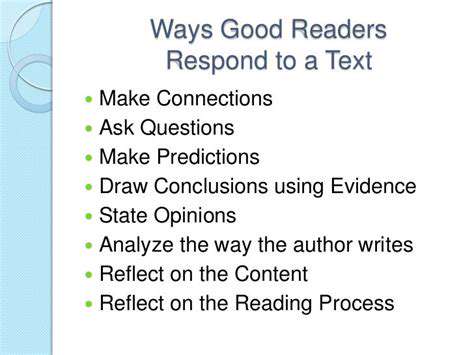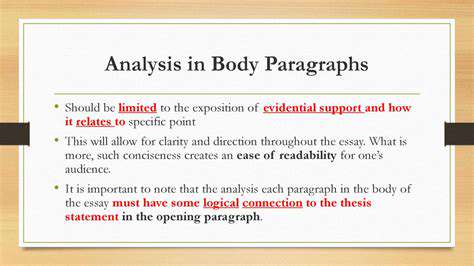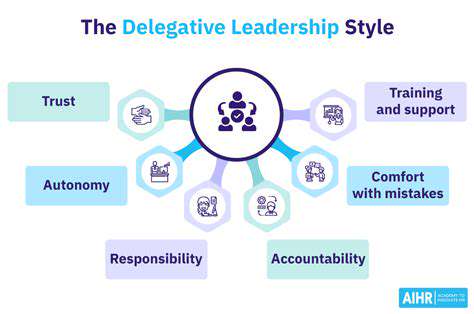Tips for Acing the ACT Science Section
Understanding Scientific Concepts
A crucial aspect of mastering scientific reasoning for the ACT is a deep understanding of fundamental scientific concepts. This isn't just about memorizing facts; it's about grasping the underlying principles and how those principles relate to one another. Think about the relationship between photosynthesis and cellular respiration, or the interplay between forces in Newton's laws of motion. Actively engaging with these concepts, rather than simply passively absorbing them, is key to successful application in the ACT Science section.
Don't just read descriptions of experiments; try to visualize the processes and predict potential outcomes. This active engagement will help solidify your understanding and make applying the concepts to new situations much easier.
Analyzing Experimental Design
The ACT Science section often presents various experiments. A key skill is critically analyzing the experimental design. Consider factors like the independent and dependent variables, control groups, and the validity of the conclusions drawn. Pay close attention to the methodology used, as this dictates the reliability and validity of the data collected. Identifying flaws in experimental design is a major part of scientific reasoning.
Interpreting Data Representations
Data is often presented in graphs, tables, and charts. Developing the ability to interpret and extract information from these visual representations is essential. Practice interpreting trends, identifying outliers, and drawing conclusions based on the presented data. This includes recognizing patterns and discrepancies in the data and understanding how different representations relate to one another. Understanding the nuances of different types of graphs is vital for accurately interpreting results.
Formulating Hypotheses and Predictions
Scientific reasoning often involves formulating hypotheses and making predictions based on observed data. This requires a strong understanding of the underlying scientific principles. Learning to develop hypotheses and predictions based on the information presented in the passage is an important skill for the ACT Science section. Practice formulating different hypotheses and considering the evidence that would support or refute each. This process strengthens your ability to think critically and logically.
Evaluating Conclusions and Reasoning
Finally, the ACT Science section often requires you to evaluate the conclusions drawn from experiments and data. Look for logical fallacies, biases, and alternative explanations. It's important to not just accept the conclusions presented; instead, critically analyze the reasoning behind them. This involves considering the limitations of the data and the potential for errors in the experimental design. Learning to identify the strengths and weaknesses of different arguments is crucial for success.
Mastering Different Data Representations
Understanding Tables and Graphs
Tables and graphs are common ways to present data in the ACT Science section. Tables often organize numerical data in rows and columns, making it easy to compare values across different categories. Graphs, such as line graphs, bar graphs, and scatter plots, visually represent relationships between variables. Recognizing the type of data representation and the variables being compared is crucial for interpreting the information accurately and drawing valid conclusions. Understanding the axes, labels, and units of measurement within these visual aids is key to extracting the essential information needed to answer questions.
Careful observation of trends and patterns within the data is vital. Are there any noticeable increases, decreases, or fluctuations? Are there any outliers or unusual data points that might require further consideration? Understanding how the data points relate to each other, and how they might change over time or in response to other factors, is essential to answering questions that ask about trends and relationships.
Interpreting Experimental Data
The ACT Science section often presents data from experiments. These experiments typically involve manipulating one or more variables to observe their effects on others. Understanding the experimental design, including the independent and dependent variables, is critical for interpreting the results. For example, identifying the controlled variables and how they were maintained throughout the experiment is essential to understanding the validity of the conclusions.
Pay close attention to the methodology used in the experiment. Understanding the procedures and steps involved in the experiment will help you interpret the results more accurately. Did the experiment follow a specific protocol? Were there any limitations to the experimental setup that might affect the results? Understanding the experimental design and methodology will help you evaluate the validity of the conclusions.
Identifying the limitations of the experiment is an important skill. Were there any potential sources of error in the data collection or analysis? Did the experiment control all relevant variables? Recognizing potential limitations allows you to evaluate the reliability and significance of the results.
Analyzing the results of the experiments in relation to the initial hypothesis or question is also a significant step. Did the results support or contradict the hypothesis? How does the experimental data compare to any existing models or theories? This analysis is crucial for drawing valid conclusions and answering questions about the validity or implications of the experimental findings.
Analyzing Data Sets and Drawing Conclusions
The ACT Science section often presents multiple data sets, requiring you to synthesize information from different sources to answer questions. It's crucial to identify the relationships and patterns between these different data sets. How do the results from one experiment or table compare to the results from another? Looking for correlations, trends, and discrepancies between different data sets is essential for forming accurate conclusions.
Critically evaluating the presented data is essential. Are there any inconsistencies or gaps in the information? Are there any missing pieces of information that might affect your interpretation? By carefully evaluating the provided data, you can avoid drawing conclusions that are based on incomplete or inaccurate information.
Drawing conclusions based on the presented data requires careful consideration of the evidence. Avoid jumping to conclusions that are not supported by the data. Instead, focus on identifying the most plausible explanations based on the observed trends and patterns. Support your conclusions with evidence from the provided data.
Consider alternative explanations and potential limitations of the data when drawing conclusions. Are there any other possible interpretations of the data that might be equally valid? Understanding the limitations of the data helps to avoid overgeneralizing the results and making unsupported assumptions.
Synthesizing information across multiple data sets allows you to form a more complete picture of the scientific concepts under investigation.

Eliminating Incorrect Choices: A Targeted Approach

Identifying the Problem
In the realm of decision-making, identifying the core issue is paramount. Often, we find ourselves bogged down in a sea of options, struggling to discern the optimal choice. This is where the process of eliminating incorrect choices becomes invaluable. By methodically evaluating and discarding unsuitable options, we can significantly narrow our focus and increase the likelihood of selecting the best possible solution. This initial step is often overlooked but is crucial for effective decision-making.
A clear understanding of the problem at hand is essential to effectively eliminate incorrect choices. When the problem statement is ambiguous or poorly defined, it becomes difficult to evaluate potential solutions objectively. Thorough analysis and a precise articulation of the problem are crucial to a successful elimination process.
Analyzing Potential Solutions
Once the problem is clearly defined, the next step involves scrutinizing potential solutions. We need to analyze each proposed option, looking for flaws, weaknesses, or inconsistencies. By diligently dissecting each solution, we can identify those that are demonstrably unsuitable and thus eliminate them from further consideration.
Critical evaluation is key to recognizing potential pitfalls in each solution. A thorough analysis should consider factors like feasibility, cost, impact, and alignment with overall goals. By meticulously assessing each potential solution against these criteria, we can identify and eliminate those that are unlikely to produce the desired outcome.
Developing a Framework for Evaluation
To streamline the elimination process and ensure objectivity, it's beneficial to develop a structured framework for evaluating potential solutions. This framework should incorporate specific criteria relevant to the problem at hand. These criteria could include factors like budget constraints, time limitations, or required resources.
By establishing clear evaluation criteria, we can objectively compare and contrast different options. This structured approach ensures that decisions are based on factual data and logical reasoning, rather than subjective preferences or biases. A well-defined framework ultimately increases the efficiency of the elimination process.
Implementing the Elimination Process
With a clear understanding of the problem, a framework for evaluation, and a comprehensive analysis of potential solutions, we are now equipped to implement the elimination process. This involves systematically evaluating each option against the established criteria and discarding those that fail to meet the required standards. It's essential to remain impartial and avoid emotional biases during this phase.
This process can be facilitated by using checklists, scoring systems, or other organizational tools. These tools help to maintain objectivity and ensure a thorough evaluation of each choice. Consistent application of the established framework will minimize the risk of overlooking critical factors and making hasty decisions.
Read more about Tips for Acing the ACT Science Section
Hot Recommendations
- How to Stay Productive While Working Remotely
- Tips for Managing Conflict with Coworkers
- Entrance & Certification Exams (升学考试)
- How to Improve Your Storytelling Skills (Speaking)
- How to Find Profitable Side Hustles
- Tips for Preparing for the TOEFL iBT Home Edition
- Guide to Switching Careers from [Industry A] to [Industry B]
- How to Run an Effective Hybrid Meeting
- Tips for Marketing Your Side Hustle on Instagram











